by guest blogger, MARK R. SMITH
Many fellow collectors just glance at them. “Oh a ‘3’ gallon.” “Hey, look at the ‘2’ jar over here.” However, in some cases, the capacity marks are much like fingerprints for detectives, providing a background of information as the origins of our cherished pots. Such is the case with some of the capacity marks employed by our own beloved Huntington Pottery.
While numerous capacity marks are known to have been used at Huntington, the marks which I am writing about are unique to the Huntington Pottery.
Having been active in collecting, studying, buying and trading pottery for nearly 50 years now, I have yet to encounter these distinctive marks on wares from any other Pottery. Marks which transcend changes of ownership, wars, financial panics (what we call recessions today) spanning possibly some 70 or more years.
The origins of these capacity marks date to the earliest days of the Huntington Pottery, possibly prior to the firm of Lewis & Gardiner, which began operating in 1827. Potential evidence for this is of a pot believed by some researchers to have been made by one Durell Williams, a skilled craftsman who is documented to have worked at the Huntington Pottery very early on, c.1810. These capacity marks have small, square to oblong/rectangular “dots” in the body of the number.

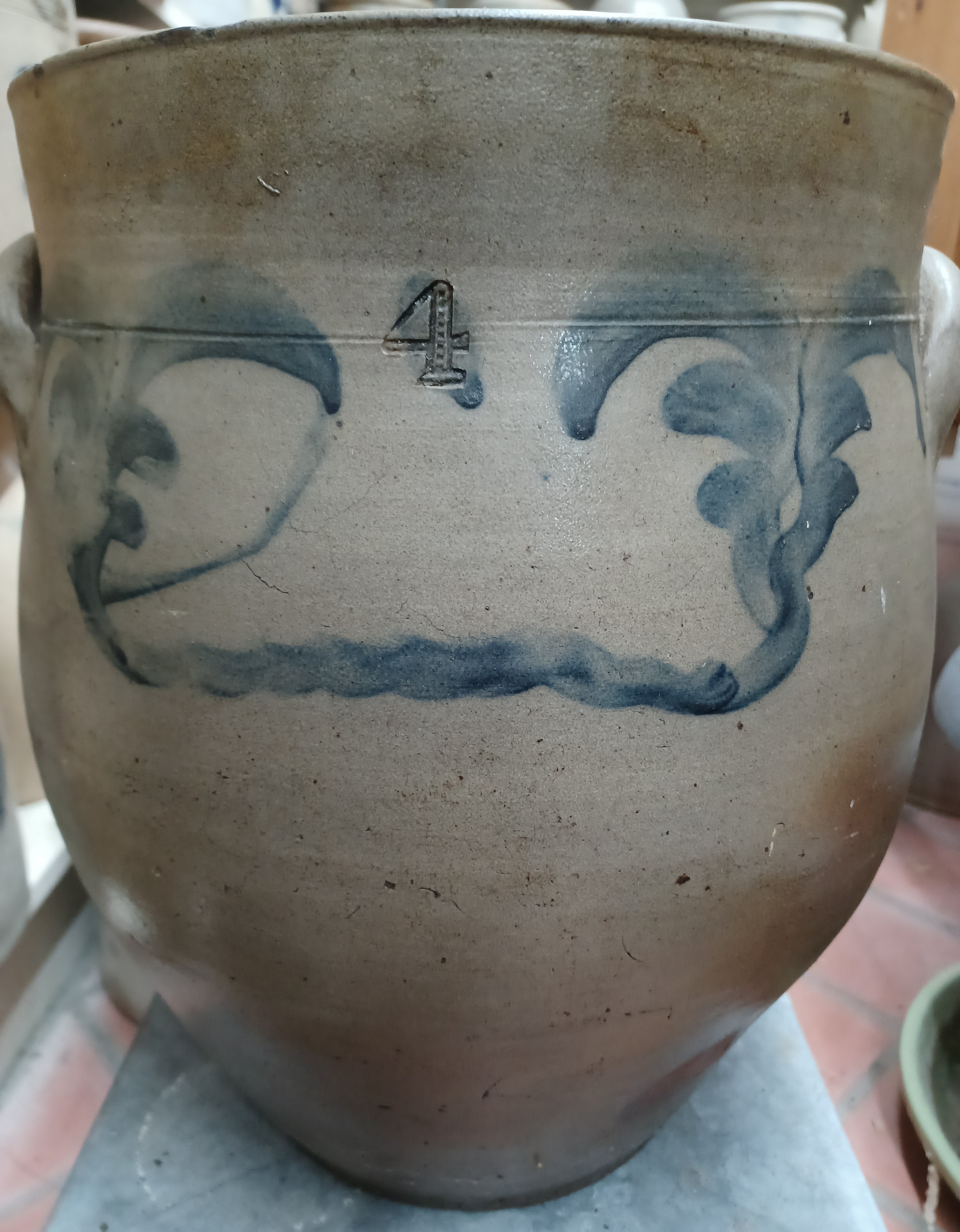
Note that the “4” in this example is deeply impressed, which hides some of the detail. If you examine the actual pot side by side with the other dotted “4” pots, you will see that the marks match exactly.
While numerous capacity marks were employed by the Huntington Pottery, including just hand painted numbers on many “F. J. Caire” pieces (1854-1863), these marks with the “dots” are to my knowledge unique to the Huntington Pottery.
One Gallon
The “1” dates at least from “Lewis & Gardiner” (1827-1854) and was used by Henry Lewis when he owned the Pottery up to 1854 when the Pottery was sold to Ketcham & Hoyt, which is the era of “F. J. Caire” makers marks. This mark seems to have vanished about this time. The square to rectangular “dots” form a straight line within the body of the numeral. There is also a solid, straight line to the right of the “dots”, but it does not touch either the top, or the bottom, of the numeral.

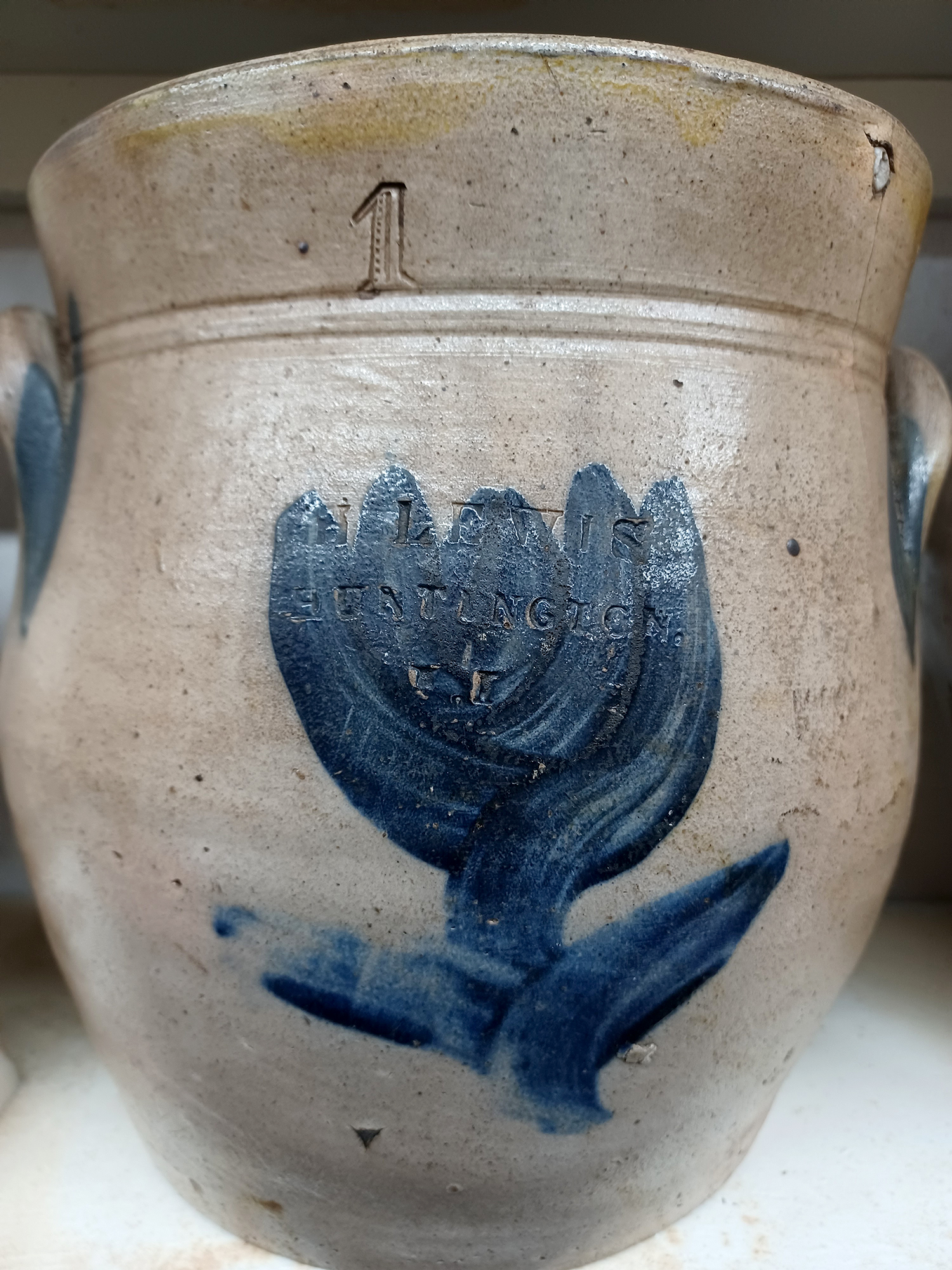
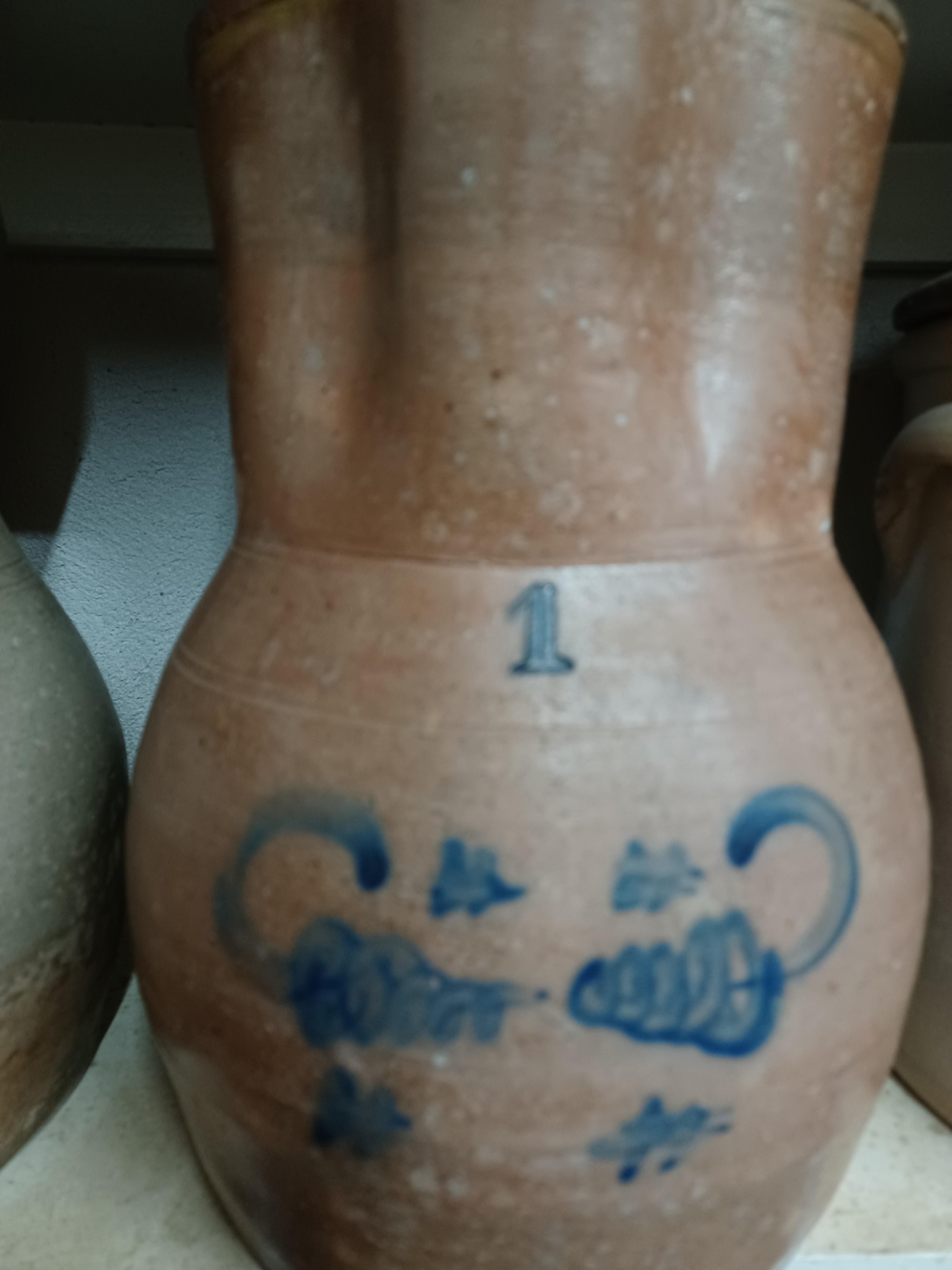
One and a Half Gallon
There is a “1 1/2 ” mark used by the Brown Brothers in which the “1” has dots in its body. This is not a rework of the earlier “1”, as the body is much thinner, however there is a striking resemblance. This mark is to my knowledge found only on pots from the Brown Brothers firm.

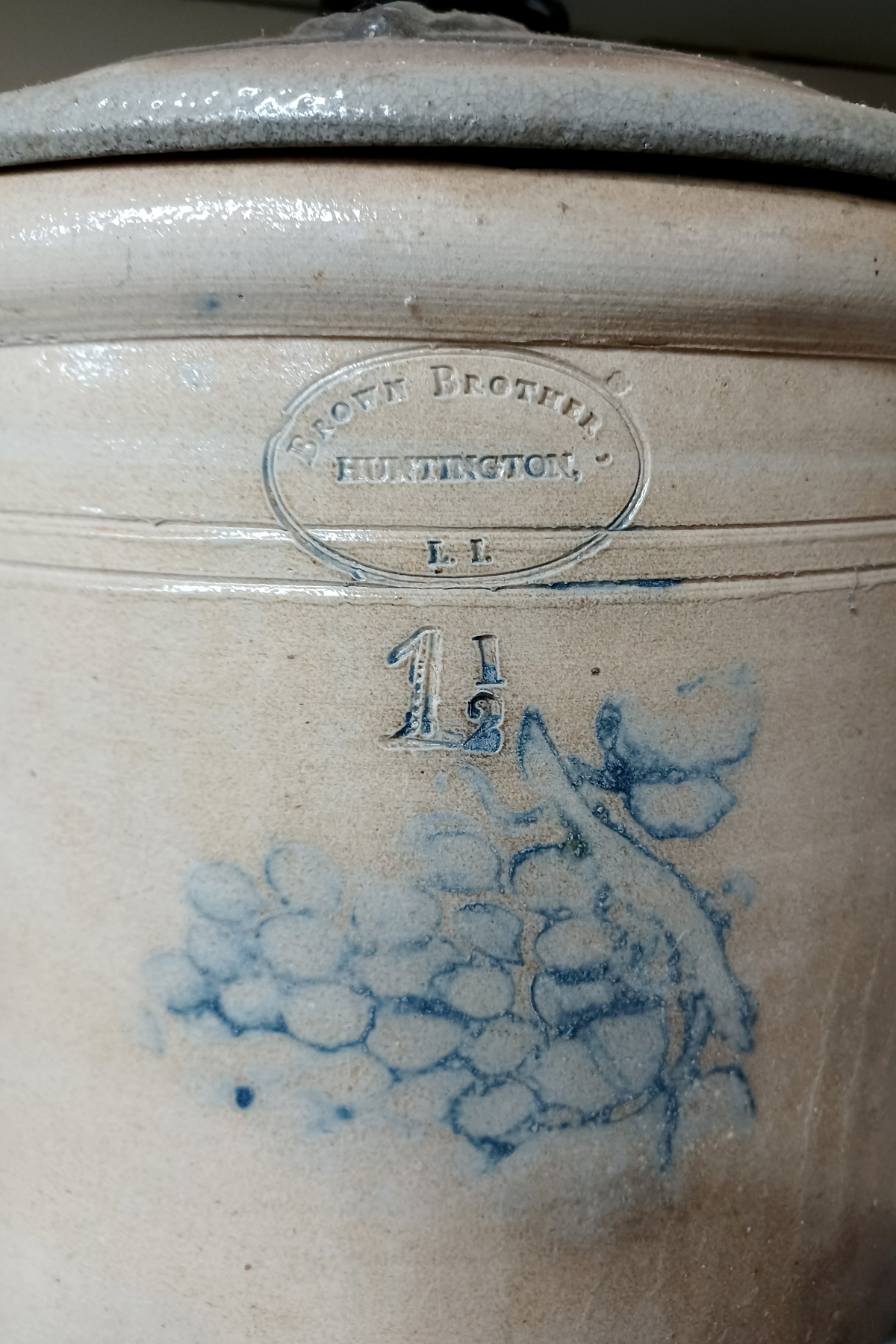
[Click here for more about Brown Brothers Stencils]
Two Gallons
The “2” also is from at least “Lewis & Gardiner” era (1827-1854), and is used up to about 1880 when George Brown Jr. takes control of the Pottery from his father, George Brown Sr.


Three Gallons
There are two different forms of the “3” found. The earlier form has rectangular to square “dots” within the body of the “3”. This mark seems to have vanished about when the Pottery was sold in 1854.
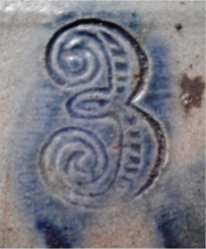

It was replaced by a mark in which the inside line of the “3” was formed by a series of “dots”. This capacity mark can be found on pots up to 1879/1880 after which it is not seen again.
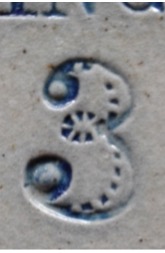

Four Gallons
Last but not least is the “4”. Again a series of square to rectangular “dots” are found in a line within the body of the numeral. As with the prior capacity numbers, its usage dates at least to “Lewis & Gardiner”, possibly earlier, and is not seen on pots produced after 1879/1880.

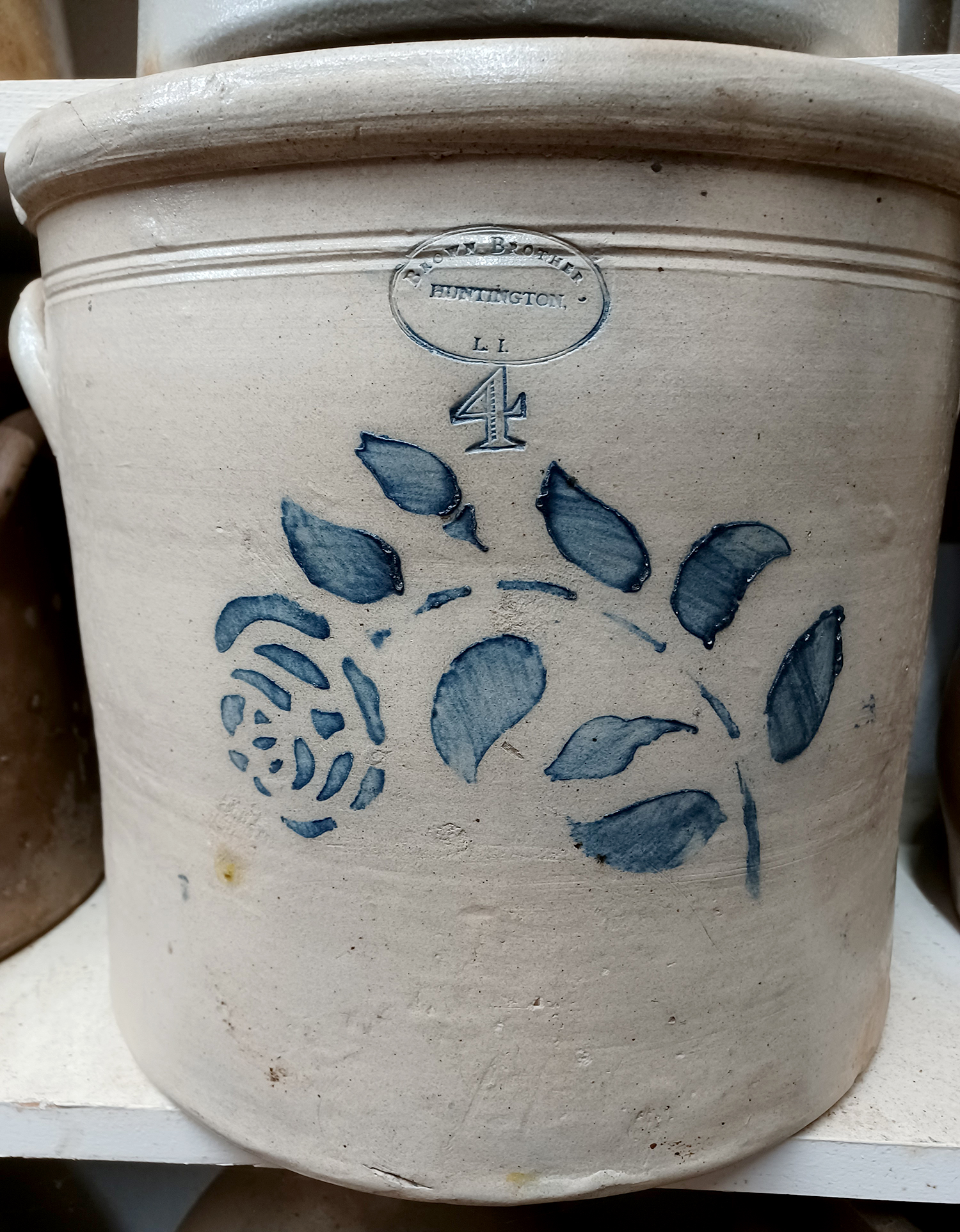
Conclusion
Using these capacity marks one can, from time to time, find unsigned Huntington wares, and be confident in the origins of their new treasure.
Appendix: Timeline of Huntington Makers Marks
| Timeframe | Makers Marks |
| c. 1810 | Durrell capacity mark, probably Huntington |
| 1805-1827 | no known maker or capacity marks |
| 1827-1854 | LEWIS & GARDINER, LEWIS, LEWIS & LEWIS, H LEWIS |
| 1854-1863 | F. J. CAIRE |
| 1863-1868 | BROWN BROTHERS |
| 1868-1904 | BROWN BROTHER |